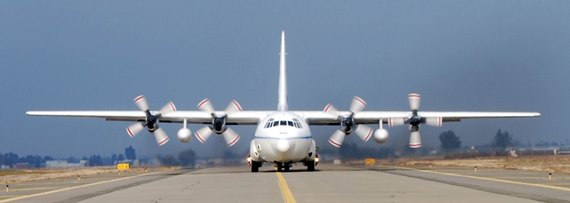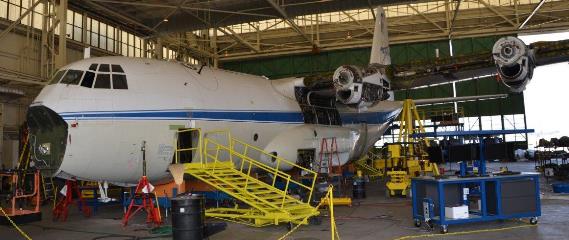
While it certainly is not ready to drop retardant over a fire today, the conversion of Coulson’s C-130Q into an air tanker is progressing very well.
The company was selected this week by the U.S. Forest Service to receive an exclusive use contract for the 32-year old aircraft that had been sitting in a Wisconsin museum for the last 10 years. Before that it was used by NASA for research, but it began it’s life as a strategic communications link aircraft for the U.S. Navy’s Fleet Ballistic Missile submarine force and as a backup communications link for the U. S. Air Force manned strategic bomber and intercontinental ballistic missile forces.
A C-130Q is similar to a C-130H, but the “Q” model was outfitted with a complex antenna system for communications with submarines and bombers.
In addition to building and installing the retardant tank, the work going on at the San Bernardino airport includes inspections which required that some of the skin be removed from the wings and other surfaces. The inspection is almost done and the aircraft is being put back together.
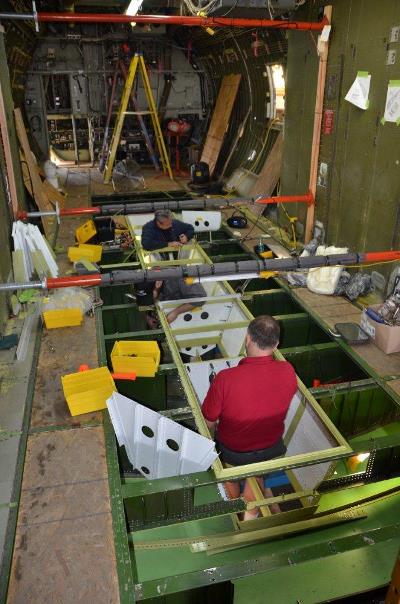
Britt Coulson told Fire Aviation that the top portion of the retardant tank is finished and the bottom is nearing completion. They expect to conduct flights in June leading toward FAA approval for a restricted category type certificate. They will also need to go through a test for the Interagency AirTanker Board which involves dropping retardant into a grid of cups on the ground to determine consistency and quantity.
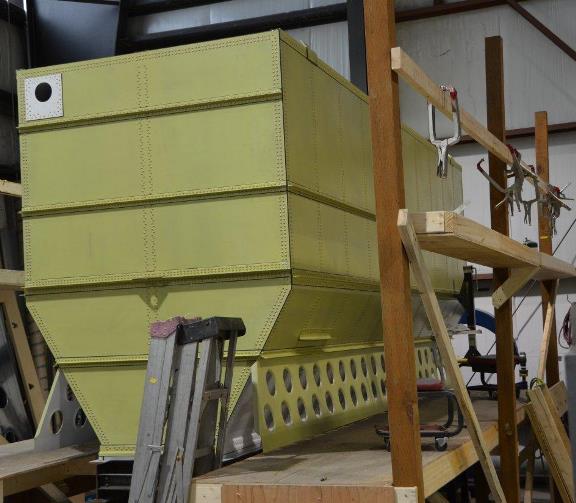
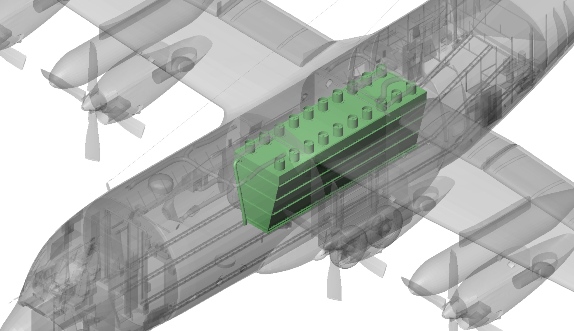
In a Coulson company newsletter published on the internet in February, 2012, Jim Messer, Chief Operating Officer, described the process they went through in selecting the aircraft to be used as an air tanker:
…To get to this point we conducted an extensive review of various aircraft capabilities and performance, looking at over 30 aircraft before concluding that the C-130 is the best available.
In the process to acquire an aircraft specific for the airtanker role, Coulson focused on those airframes that were designed specifically for the mission profile of aerial fire fighting. Although many retired high time airlines designed for high altitude point to point flights were available at lower cost they were discounted for the mission required in the fire fighting role.
The C-130Q aircraft was designed to undertake aerial wildland fire operations. Its manoeuvrability, and performance, operating at low levels at low speed with, heavy loads in rugged terrain, immediate power response, and STOL capabilities makes the C-130 a natural fit as an Airtanker.
Thanks go out to Britt and Ryan

